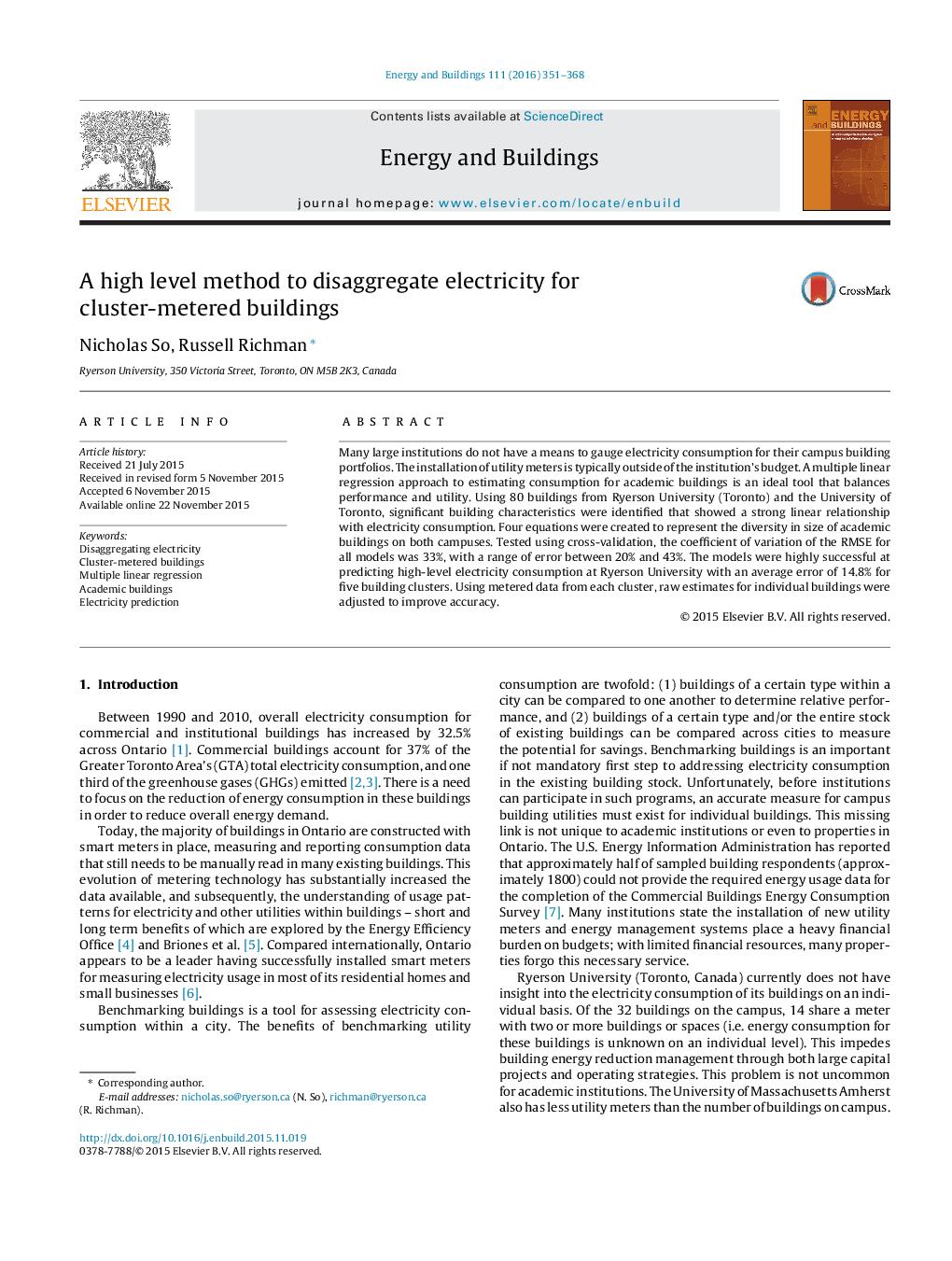| Article ID | Journal | Published Year | Pages | File Type |
|---|---|---|---|---|
| 6730803 | Energy and Buildings | 2016 | 18 Pages |
Abstract
Many large institutions do not have a means to gauge electricity consumption for their campus building portfolios. The installation of utility meters is typically outside of the institution's budget. A multiple linear regression approach to estimating consumption for academic buildings is an ideal tool that balances performance and utility. Using 80 buildings from Ryerson University (Toronto) and the University of Toronto, significant building characteristics were identified that showed a strong linear relationship with electricity consumption. Four equations were created to represent the diversity in size of academic buildings on both campuses. Tested using cross-validation, the coefficient of variation of the RMSE for all models was 33%, with a range of error between 20% and 43%. The models were highly successful at predicting high-level electricity consumption at Ryerson University with an average error of 14.8% for five building clusters. Using metered data from each cluster, raw estimates for individual buildings were adjusted to improve accuracy.
Keywords
Related Topics
Physical Sciences and Engineering
Energy
Renewable Energy, Sustainability and the Environment
Authors
Nicholas So, Russell Richman,
